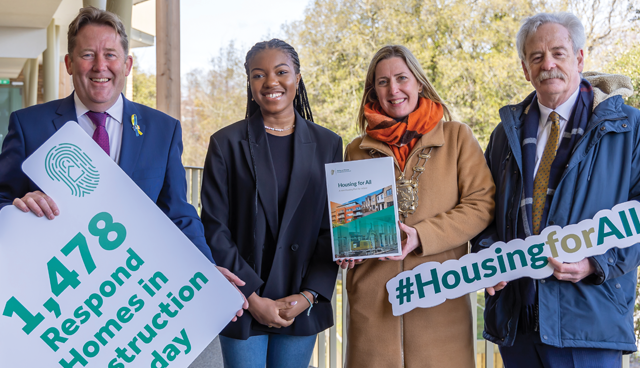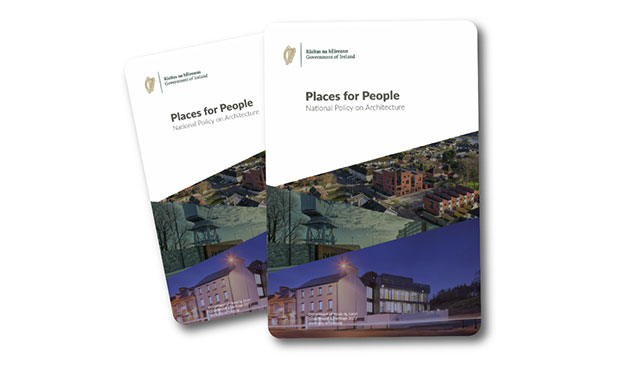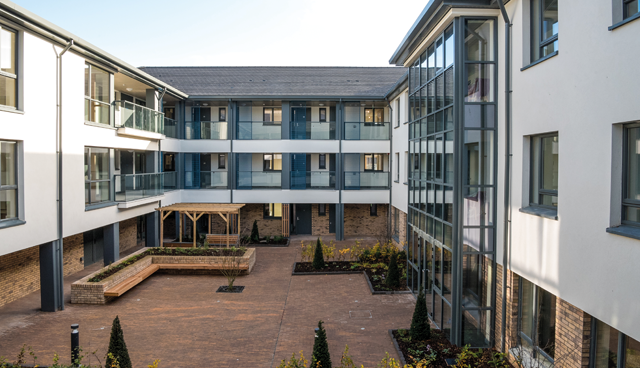
Respond: Committed to providing future-proofed and cost efficient homes
4th July 2022
LDA benefits from close partnership with local authorities and state agencies
4th July 2022Places for People: A national architectural policy

The Government published its National Policy on Architecture in May 2022 following Cabinet approval. Places for People seeks to promote “the power of architecture and design to bring about a more sustainable society”.
The policy has been designed with the explicit goal of support the implementation of “architectural and built environment priorities” including Project Ireland 2040, the Climate Action Plan, Housing for All, and Town Centre First; it will “promote and embed quality in architecture and the built environment in Ireland, for increased environmental, economic, and social sustainability and resilience”.
The four objectives shaping the vision of the policy are: sustainability, prioritising “environmentally sensitive buildings and places to achieve sustainable development goals”; quality, designing and delivering quality buildings and spaces for all; leadership, advocating for leadership to “prioritise quality architectural outcomes”; and culture, fostering a culture that “values architecture as both art and science, serving people, place, and planet”. The implementation programme for the policy is not organised under the four objectives, but three categories under which the 42 actions within will be implemented: value and empower; set a quality agenda; and generate knowledge.
Three initial priorities within these actions are identified as foundations for the success of further implementation: the creation of a public sector information loop; the agreement of a set of national design quality criteria; and the carrying out of analysis of architectural and built environment research needs and data requirements.
Value and empower
The first of the implementation categories is “primarily about people and culture”, particularly with the scale and effects of impending climate changes and how these will affect where and how buildings and places are built, which is “poorly understood” according to the policy plan and “often highlighted in terms of financial costs and redundant occupations, creating a very real risk of confusion, inertia, and paralysis”. The action area will also support built-environment actions such as the Irish Architecture Foundation’s Reimagine placemaking scheme.
The first stage implementation action within this category is the creation of a virtual public sector exchange network in order to enable consistent stakeholder reporting around EU policies, programmes, directives, and emerging opportunities and challenges. An online forum will be created in order to “provide a means for public sector users to interact with each other on good practices and issues connected to the implementation of planning, building control, and other built environment regulatory frameworks”.
The forum will also provide a mechanism for feedback to be sent from users to regulators on issues such as the implementation of policy and legislation and give users advance notice of upstream regulatory and policy developments in order to aid public bodies in the forecasting of operational capacity and capability requirements. It will also allow for solution sharing for common built environment design, management, and operational challenges.
Set a quality agenda
The second of the implementation categories is “about robust methods and frameworks”, chief among them the publication of national design quality criteria. The publication of the criteria will “set and consistently apply nationally applicable built environment quality requirements drawing on international, European, and Irish priorities”. The criteria will be centred on describing and measuring dimensions and qualities relevant to architecture, the built environment and landscape design, delivery, performance, and use, with an eye to achieving sustainability goals in the environmental, social, and economic spheres.
The implementation plan says that the application of national quality criteria will both improve the design and implementation of architecture and the built environment, and assist the delivery of further government programmes such as Project Ireland 2040, Housing for All, and the Climate Action Plan, supporting “all stakeholders to measure the short- and long-term environmental, social and economic sustainability progress and outcomes in addition to assessing the outputs of individual project contracts”. At a time of such inflation, the application of the criteria is also said to be “a structured risk strategy to reduce the cost of quality”. The implementation and incorporation of the criteria will be led by the Department of Housing, Local Government and Heritage, although no date of implementation is given within the plan.

As part of its push to promote the importance of quality in the built environment, the Government will also seek to promote quality assurance at the local, regional and sectoral levels in line with criteria. This quality assurance will allow for the upgrading of the public realm in line with the Design Manual for Urban Roads and Streets and assure the State that public sector built environment has been built to a high and sustainable quality.
Generate knowledge
The third and final category is focused “generating and using information” via support for research and innovation. The policy plan states that “architecture and the built environment are not prioritised in Irish research streams or research facilities” currently, which it states comes at the cost of potential funding opportunities and poses risks to the delivery of programmes such as Housing for All and the Climate Action Plan. To combat this, a national architectural and built environment research service will be founded.
The research service will provide a “permanent, structured and networked research entity for identification, collection, analysis, innovation and forecasting of architectural and built environment design, delivery and performance data and needs, which will support government policies and enable progress to be measured against relevant indicators”. First in this process will be the analysing of research needs and data requirements, including: mapping existing sources and gaps; identifying the scope of research requirements; collating architecture an built environment requirements; and identifying suitable methodologies and communications vehicles.
Once the analysis is complete, the implementation will move to the division, proposal, and formalisation of a research entity, one which the policy states “could potentially work on an all-Ireland basis”.






